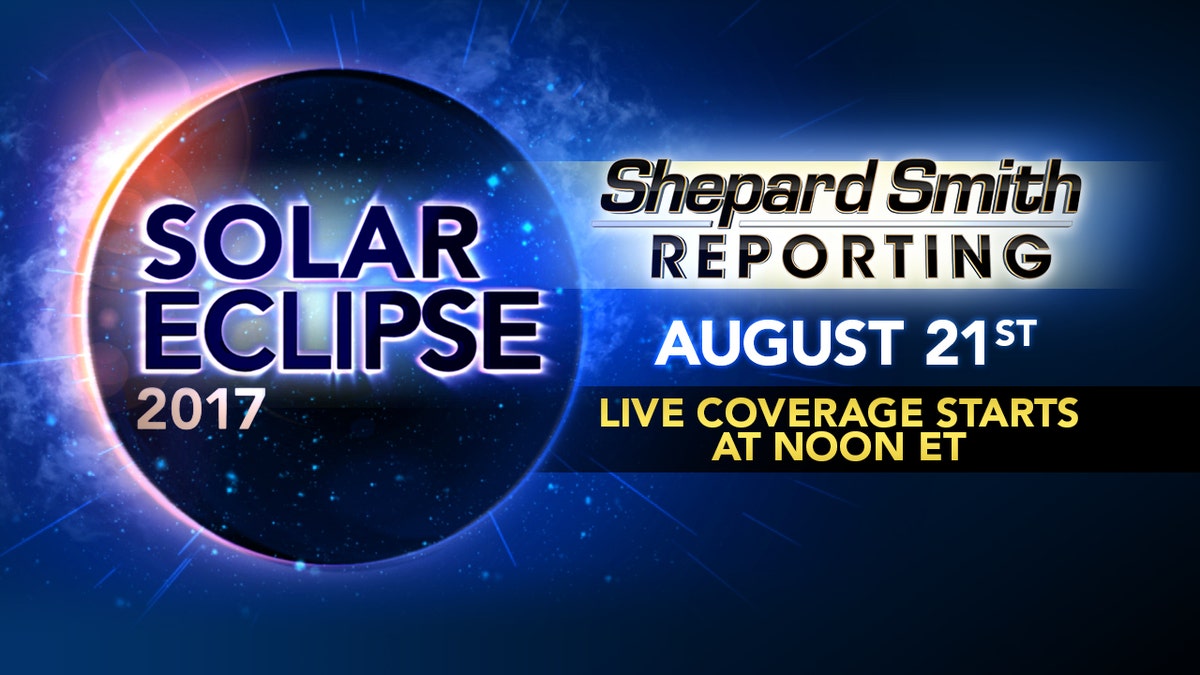Total solar eclipse of 2017: What to know
A total solar eclipse will happen on August 21, 2017. Astrophysicist Neil DeGrasse Tyson explains the rare event and discusses why he’s calling it 'America's eclipse'
On August 21, 2017, the United States will have something happen to it that hasn't happened since Jimmy Carter was President, Sony introduced the Walkman and "M*A*S*H" was still on TV.
The U.S. will go dark.
Why it's important
A total solar eclipse will happen on the continential U.S., due to the Moon passingbetween the Earth and the Sun. It's been 38 years since the continential U.S. has been in the shadow of the total solar eclipse, according to Dr. Tyler Nordgren, a professor & author of "Sun, Moon, Earth."

In an interview with Fox News, Nordgren noted that people in Pacific Northwest may get to see the eclipse and that "this year it’s going to go from coast to coast and half the people alive this year were not even born the last time it happened.”
The total solar eclipse, which happens around the globe once a year, is expected to last just two and a half minutes, much shorter than other eclipses, according to Astrophysicist & Hayden Planetarium Director, Neil Degrasse Tyson.
"Perhaps a hundred million people will see it—that’s a great thing," Tyson told Fox News. "In a day where everyone can travel, there’s no reason why we shouldn’t have every single American in the path of totality.”
What is a total eclipse?
Traditional solar eclipses -- in which the moon moves in front of the sun -- are common, happening once every 18 months or so, according to Space.com, but the order and magnitude of this one is what makes it rare.

The eclipse should start being seen in the Pacific Northwest, Nordgren noted, likely starting in Oregon and then making its way through the contiguous U.S., with stops along Idaho, Wyoming, St. Louis, before making its way to South Carolina and then finally in the Atlantic Ocean.
WHERE TO SEE THE TOTAL SOLAR ECLIPSE
How to watch the 2017 total solar eclipse
For anyone planning to watch the total solar eclipse, safety is a must.
Solar viewing glasses, which can be ordered from Eclipse2017.org as well as other organizations, which make it possible for observers to stare directly at the sun before and after the event. (Observers should note sunglasses should not be used in place of solar viewing glasses.)
Eclipse watchers can also use binoculars or telescopes, though neither intrustrment is necessary to view either the partial eclipse or the total eclipse, depending upon where in the country you are stationed.
NASA has even gone so far as to launch an app to let eclipse watchers collect and analyze environmental observations.
Why it's important
The upcoming total solar eclipse is just one of several that have happened in the U.S. previously. The total solar eclipse that occurred in 1998 covered parts of the Northern and Southern hemisphere. The one in 1991 covered almost all of North America, except for certain parts of Canada, whereas this upcoming one is expected to be a worldwide phenomenon, Nordgren noted.
NASA astrophysicist Dr. Georgia de Nolfo noted that the upcoming total solar eclipse will allow researchers to view and test in real-time instruments, making it a "breathtaking opportunity for everyone who sees it.
Tourists will be coming from far and wide to see the event, with massive implications for the hotel industry, but Astronomy Magazine editor Dave Eicher noted that it's more than just a vacation -- it's an event of a lifetime.
"It's probably going to be the most observed eclipse in history and it's really a special thing," Eicher said.









































